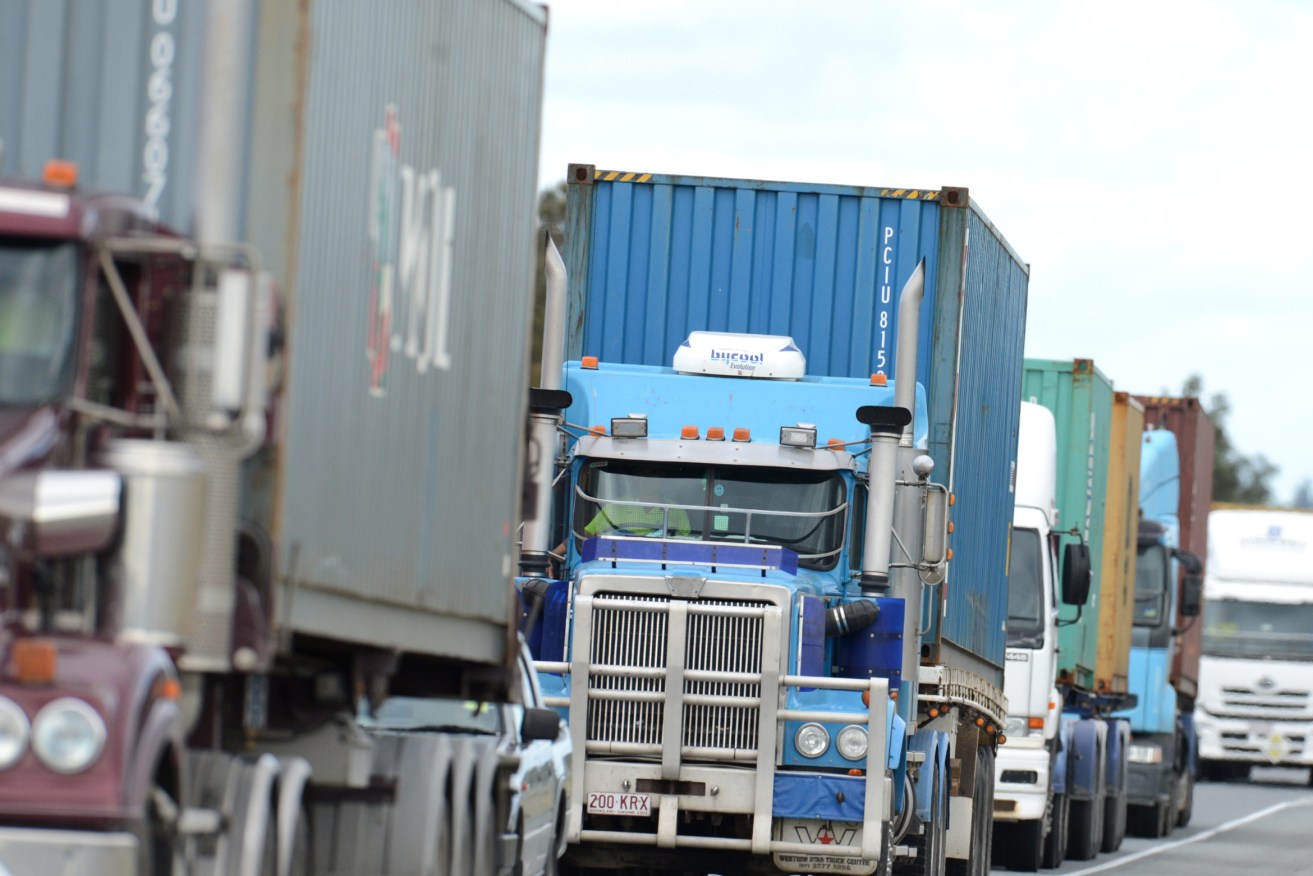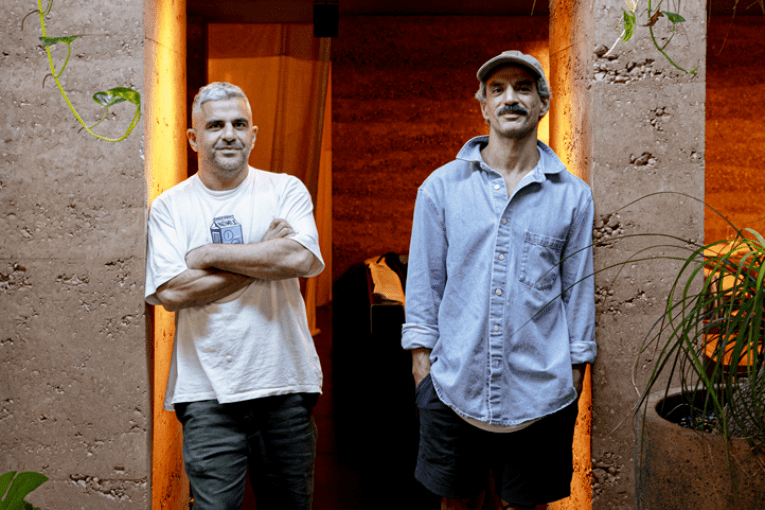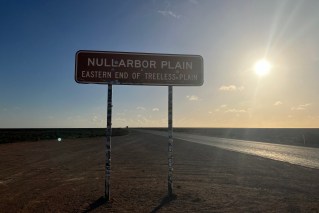How Brisbane’s ‘missing link’ could stop millions of trucks choking the city to death
The Palaszczuk Government has been urged to decide on the future of one of Queensland’s most contentious proposed infrastructure projects, a freight rail link for the Port of Brisbane.


New technology is being used to make heavy transport safer. (Photo: AAP Image/Dan Peled)
The lack of movement on the project has prompted repeated warnings of an explosion in the number of trucks on Brisbane’s roads as exporters are forced to means other than rail to get their product to port.
Just 2.5 per cent of container freight out of Brisbane gets to the port by rail, much less than the average 30 per cent in other major Australian ports. Yet the number of container movements from the port is expected to increase from 1.5 million a year to 5 million in 2050.
The Port of Brisbane forecasts rail freight on the present network will reach capacity in three years as exporters struggle to compete with growth in the higher priority passenger rail.
It predicts that unless more capacity is built, truck movements will increase sixfold over the next 30 years to reach 13 million a year.
“This is not sustainable, desirable or affordable for southeast Queensland,” the port’s latest draft land use strategy states.
With a four year term ahead of it and an economy that is likely carrying hidden scars from its battle against the pandemic, the government has been warned several times since the election about falling into “business as usual” mode.
However, frustration abounds when it comes to its approach on the freight rail link to the Port of Brisbane.
A study into where a corridor for the link would run and how it would be built was completed months ago yet despite the Federal Government promising $10 million for a proper business case, the study has not been released and there is little indication the project is seen as a priority.
The study was announced with much fanfare in April 2018 and has hardly been mentioned since, at least in government circles. Indeed, if it was not for the persistent lobbying of local MPs and the Port of Brisbane Corporation calling for its release, you would be forgiven for believing it never existed.
But exist it does, held by trembling hands somewhere in the vast expanse of the transport bureaucracy and probably regarded with an amount of fear and trepidation akin to that commanded by the nuclear launch codes.
For discussing its existence, let alone its contents, would start a sequence of events leading to a decision having to be made. And in this case, any decision would be, as Sir Humphrey Appleby would say, courageous.
This is because a dedicated corridor would have to be created from Acacia Ridge freight centre to the port, meaning inevitable land resumptions or expensive tunnelling, or both.
Early versions of government’s biggest existing infrastructure project, the $5.4 billion Cross River Rail, was supposed to solve this problem but the need to save costs trumped the need for a dedicated freight link to the port. Hence, the problem remains.
There is speculation that the study the government is sitting on has narrowed the original four or five proposed locations for the corridor down to two, including the option of a tunnel.
At least it appears the government thinks a rail freight link to the port is needed. But what about the results of the study the government was so keen to talk about two years ago?
The Department of Transport and Main Roads issued a statement saying: “A potential dedicated, future, rail freight connection would support efficient freight movement while minimising heavy vehicle operations on our road network to promote safer use and reduce impacts to our community”.
“Further information about the outcomes of the work undertaken to date, and proposed next steps, will be released to the public in the coming months.”
In other words, talk to the hand.
The responsible minister, Mark Bailey, is not exactly the poster child for transparency and openness after revelations he had deleted work-related emails from his “mangocube” personal account a few years ago.
With that sort of record, those who want the study’s findings released and then acted on may be waiting some time yet.












